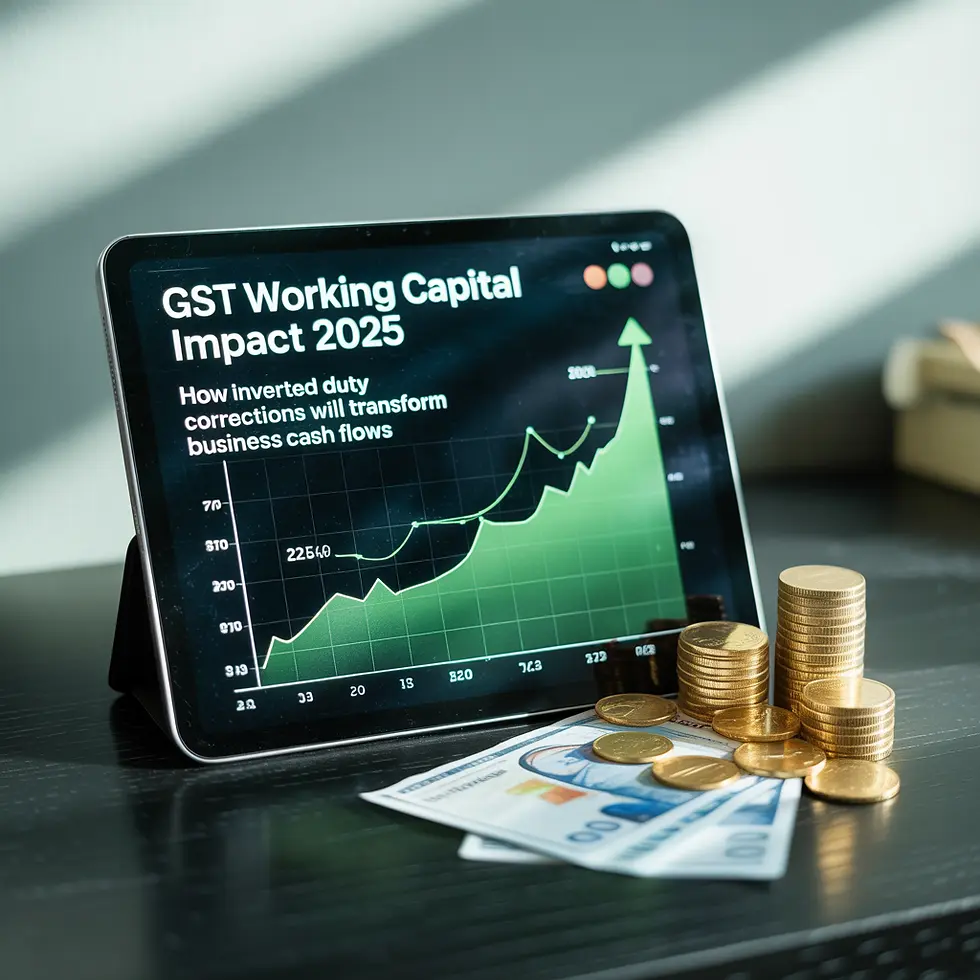Major GST Changes in India September 2025 : Simplified Rates, Lower Taxes, and Industry Impact
- Dugain Advisors
- Sep 4
- 2 min read

Major GST Changes in India September 2025
India’s Goods and Services Tax (GST) regime is undergoing a significant overhaul effective September 22, 2025, aimed at simplifying tax
slabs and reducing the burden on essential goods and services. The GST reforms 2025 introduce just two main tax rates—5% and 18%—making compliance easier for businesses and lowering costs for consumers. This blog covers the key GST changes, their expected industry impact, and provides an easy-to-remember giveaway for quick reference.
What Are the Recent GST Changes?
The government has replaced the complex four-tier GST structure (5%, 12%, 18%, and 28%) with a simplified two-rate system: 5% for essentials and 18% for most goods and services. A new 40% GST applies only to luxury and sin goods like tobacco, high-end vehicles, and casinos.pib+1
Many food items, personal care products (shampoo, toothpaste), fitness & wellness services, and healthcare diagnostics are now taxed at just 5%, or exempted from GST altogether.business-standard+1
Individual health and life insurance policies have been made GST-free, enhancing affordability and encouraging coverage.pib
Hotel tariffs up to ₹7,500 per night, along with beauty and renewable energy services, now attract a 5% GST, fueling growth in tourism and green industries.pib+1
GST Rate Changes Table (Effective September 22, 2025)
Sector / Item | Old GST Rate (%) | New GST Rate (%) | Expected Industry Impact |
Personal care (shampoo, toothpaste) | 18 | 5 | Higher demand, competitive pricing |
Fitness & wellness services | 18 | 5 | More affordable access |
Medical diagnostics and labs | 18 | 5 | Boost in healthcare services |
Health & life insurance (individual) | 18/12 | 0 | Increased policy uptake |
Educational coaching (up to class 12) | 18 | 0 | Support for students and coaching centers |
Hotels (below ₹7,500 per night) | 12 | 5 | Increased domestic tourism |
Hotels (₹7,500 and above) | 28 | 18 | More accessible luxury stay |
Textile sector (man-made fibers, yarns ≤ ₹2,500) | 12/18 | 5 | Export growth and better margins |
Food items & lifesaving medicines | 5/12 | 0/5 | Cheaper essentials, higher consumption |
Luxury and sin goods (tobacco, casinos) | 28+ | 40 | Revenue protection from non-essentials |
Expected Industry Impacts
Consumers benefit from lower prices on essentials, fitness, healthcare, and travel, boosting spending.business-standard+1
The textile sector gains from lower GST creating a competitive export advantage.timesofindia.indiatimes
Tourism and hospitality expand due to affordable hotel rates under ₹7,500 per night.pib
Healthcare and insurance sectors expect wider adoption and policy penetration.pib
SMEs and startups enjoy simpler compliance with dual rate slabs and fewer paperwork hassles.pib
Giveaway: Remember the “GST 5-18-40” Rule!
5% GST applies to essentials, wellness, and key services.
18% GST applies to most other goods and services.
40% GST applies exclusively to luxury and sin goods.
This simple mnemonic helps businesses and consumers quickly navigate the new GST structure.
Major GST Changes in India September 2025
Links





